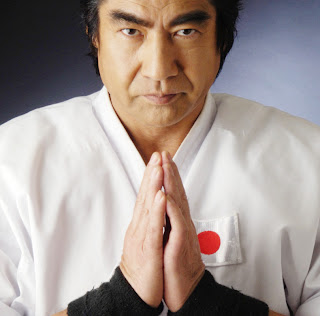(9)ללמוד מילים ביפנית שמשתמשים באימון קראטה
“otagai”
“hantai” and “gassho”
After
bowing to those that you should respect, you also bow to “otagai”
“Otagai”
means ‘each other’. “Otagai ni
rei” - “ni” is like the English
preposition ‘to/toward’ and “rei” is ‘to bow’. Japanese word-order is opposite
so you say ‘each other - toward - bow’ but it means ‘bow to each other’. “Sensei
ni rei” “Senpai ni rei” and “Otagai ni rei”, these ‘bows’ at the beginning of
the training mean not only to show respect but also to ask a favor that they
will instruct you and practice together.
Now,
warming up exercise. I will explain the names of the body and the movements later.
Here are a few Japanese words that I hear in the warming up.
“Hantai”
- it means ‘opposite/reverse’
If “sensei” says “hantai” when you are
twisting your head to the right, you have to twist it to the opposite side(to
the left).
“Gassho”
合掌 - the first kanji 合”ga(t)”
means ‘to put together’ and the second
kanji 掌 “sho/shou” means ‘palm’ as in “shoutei”(palm strike) so
“gassho” means to put both palms together. The stress(accent) should be on “sho”. “Gassho”
exercise in the warming up is to strengthen the wrists. You are supposed to put
palms together(do “gassho”) and push them with all strength.
In
Japan, “gassho” is ‘praying hands’. Japanese people do “gassho’ when they pray
to Buddha. Japanese children are taught to do “gassho” before and after eating
which is to show appreciation for the
food and for people who prepared the food. Japanese people don't do “gassho”
when they just say ‘thank you’ though… Thai people do.
http://www.south-to-north.net
http://www.south-to-north.net
“Nukite” – I will explain this word when I explain hand techniques
Osu

No comments:
Post a Comment